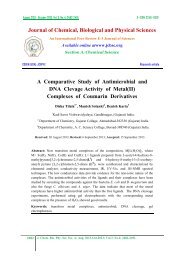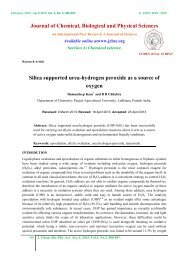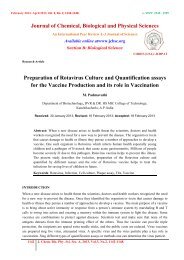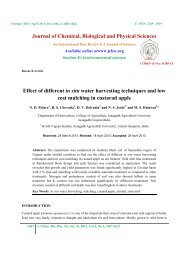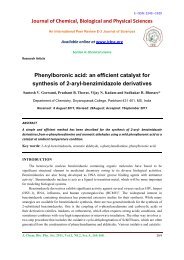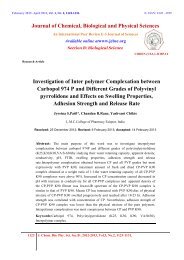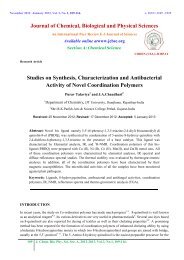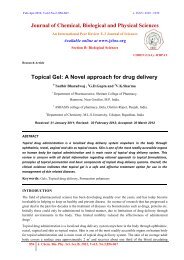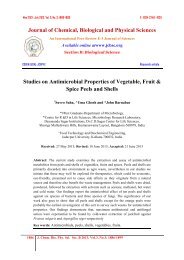Numerical Accuracy of Runge-Kutta Fourth Order Method
Numerical Accuracy of Runge-Kutta Fourth Order Method
Numerical Accuracy of Runge-Kutta Fourth Order Method
- No tags were found...
Create successful ePaper yourself
Turn your PDF publications into a flip-book with our unique Google optimized e-Paper software.
<strong>Numerical</strong> <strong>Accuracy</strong>.....R. B. Srivastava and V. K. Pandey.k2=h1*f(x0+h1/4,y0+k1/4);k3=h1*f(x0+3*h1/8,y0+3*k1/32+9*k2/32);k4=h1*f(x0+12*h1/13,y0+1932*k1/2197-7200*k2/2197+7296*k3/2197);k5=h1*f(x0+h1,y0+439*k1/216-8*k2+3680*k3/513-845*k4/4104);y1=y0+25*k1/216+1408*k3/2565+2197*k4/4104-k5/5;//exact value write h1 for xev=(4*h1*h1*h1)/(3*(1+h1*h1));fprintf(fpt,"%7.2f %22.14f %22.14f %22.14f\n",h1,ev,y1);}fclose(fpt);}double f(float x, float y){double r;r=(4*x*x-2*x*y)/(1+x*x);return(r);}With the help <strong>of</strong> above computer program, we have calculated the value <strong>of</strong> y, exact value <strong>of</strong> y,difference between calculated and exact values <strong>of</strong> y and percentage error in the value <strong>of</strong> y. We havecalculated the values <strong>of</strong> y in the interval [0, 1] by assuming the step size <strong>of</strong> 0.01. Percentage error in the value<strong>of</strong> y is defined asPE y=Difference in the calculated and exact values <strong>of</strong> yExact value <strong>of</strong> yx 100Table-1: Differential equations with boundary conditions along with exact solutionsS. No. Differential Equation Boundary Condition Exact Solution1 dy/dx = y - x y=2 when x=0 y=e x +x+12 dy/dx = 1 + x y=1 when x=0 y=x 2 /2+x+13 dy/dx = x + y + 1 y=1 when x=0 y=3e x -x-24 dy/dx = -x + y + 1 y=1 when x=0 y=e x +x5 dy/dx = x / y y=1 when x=0 y=(x 2 +1) 1/26 dy/dx = x + y y=1 when x=0 y=2e x -x-17 dy/dx = -(1 +x) y 2 / 2 y=1 when x=0 y=4/(x 2 +2x+4)8 dy/dx = 1 + y 2 y=0 when x=0 y=tan x9 dy/dx = -xy 2 y=1 when x=0 y=2/(x 2 +2)10 dy/dx = x 2 - y y=1 when x=0 y=-e -x +x 2 -2x+211 dy/dx = 3x + y / 2 y=1 when x=0 y=13e x/2 -6x-1212 dy/dx = 1 - y y=0 when x=0 y=1-e -x13 dy/dx = 1 + y y=0 when x=0 y=e x -114 dy/dx = 1 / (2y) y=1 when x=0 y=(x+1) 1/215 dy/dx = (4x 2 – 2xy) / (1 + x 2 ) y=0 when x=0 y=4x 3 /{3(x 2 +1)}904 J. Chem. Bio. Phy. Sci. Sec. C, 2012, Vol.2, No.2, 901-909.



